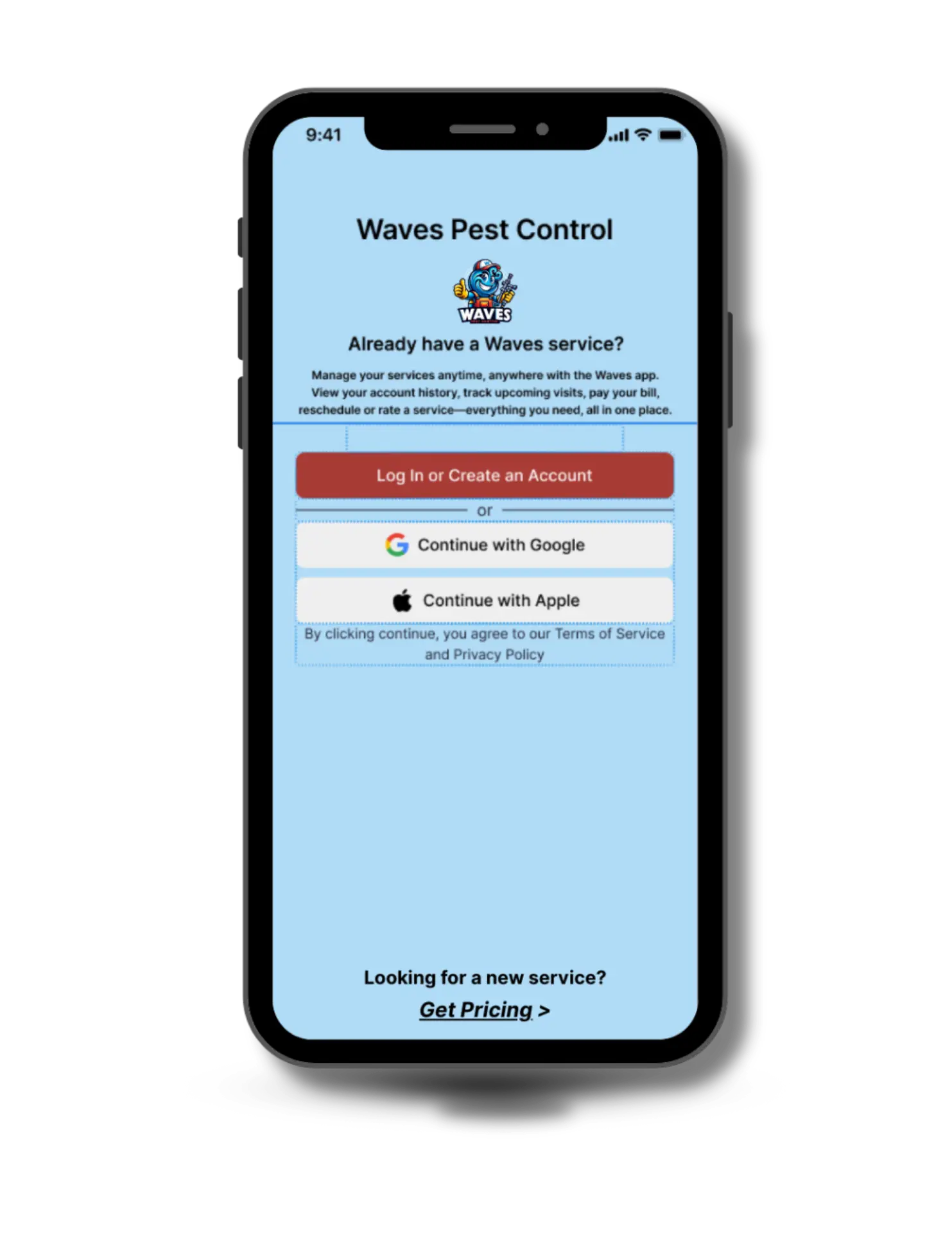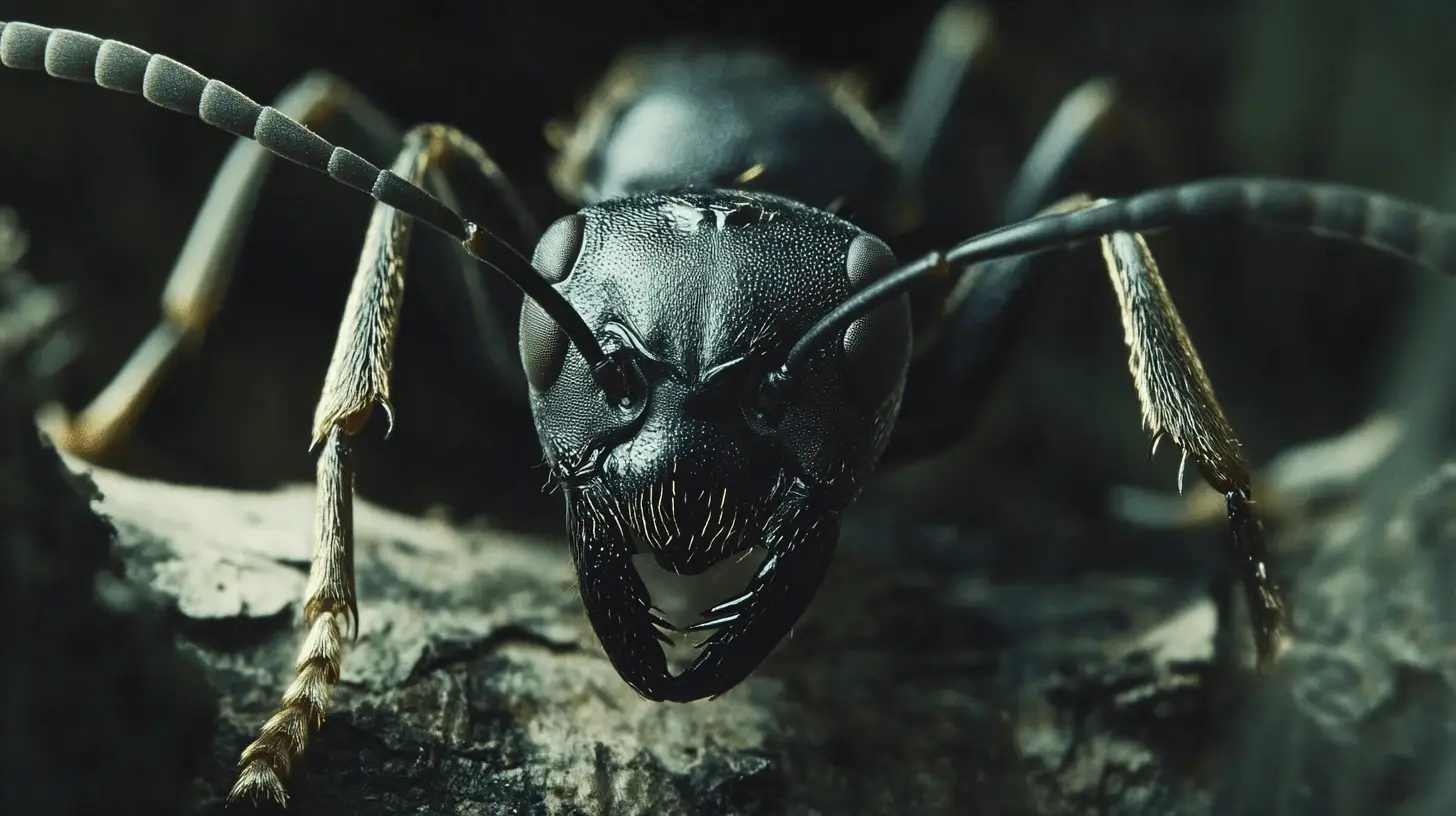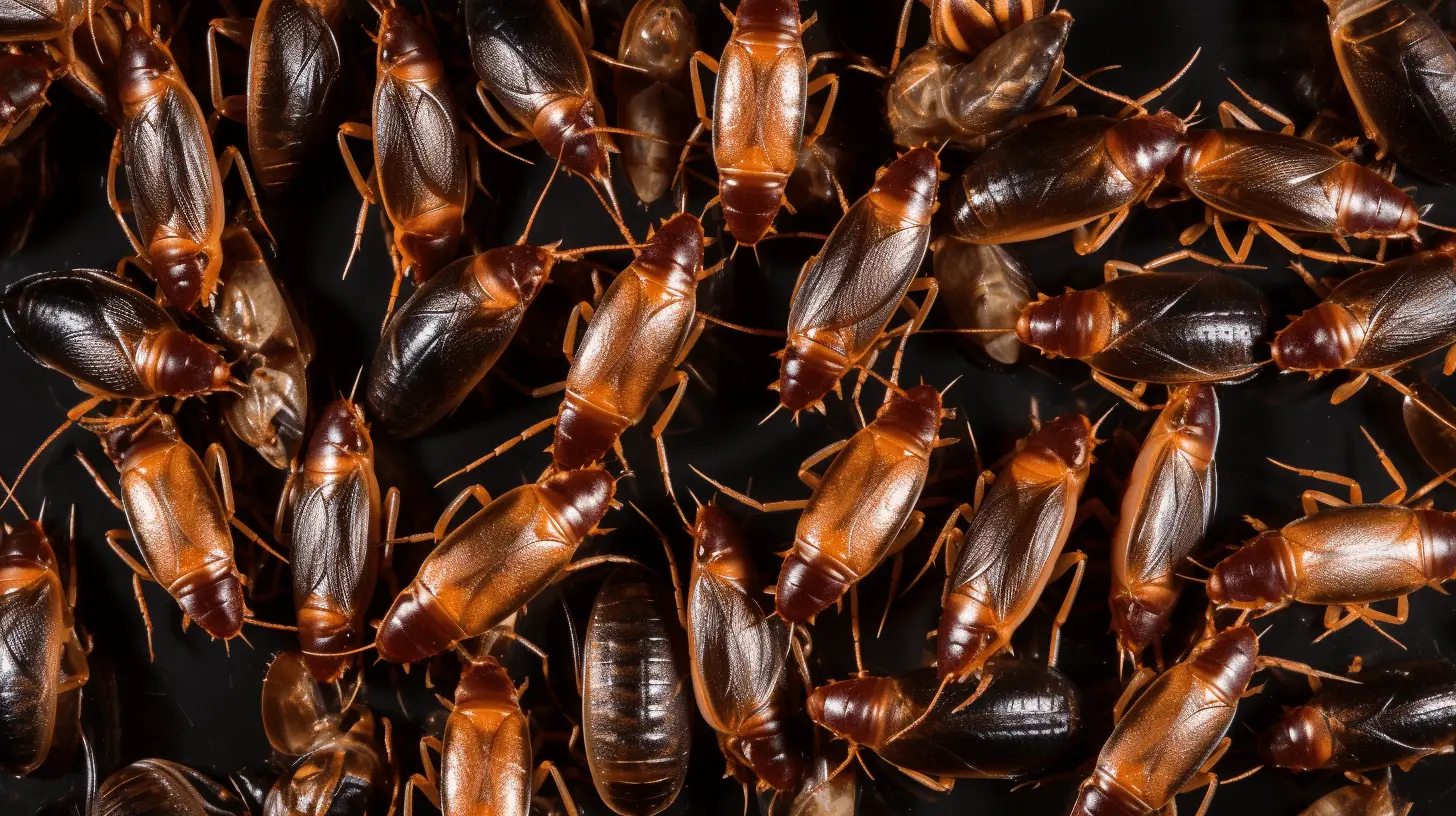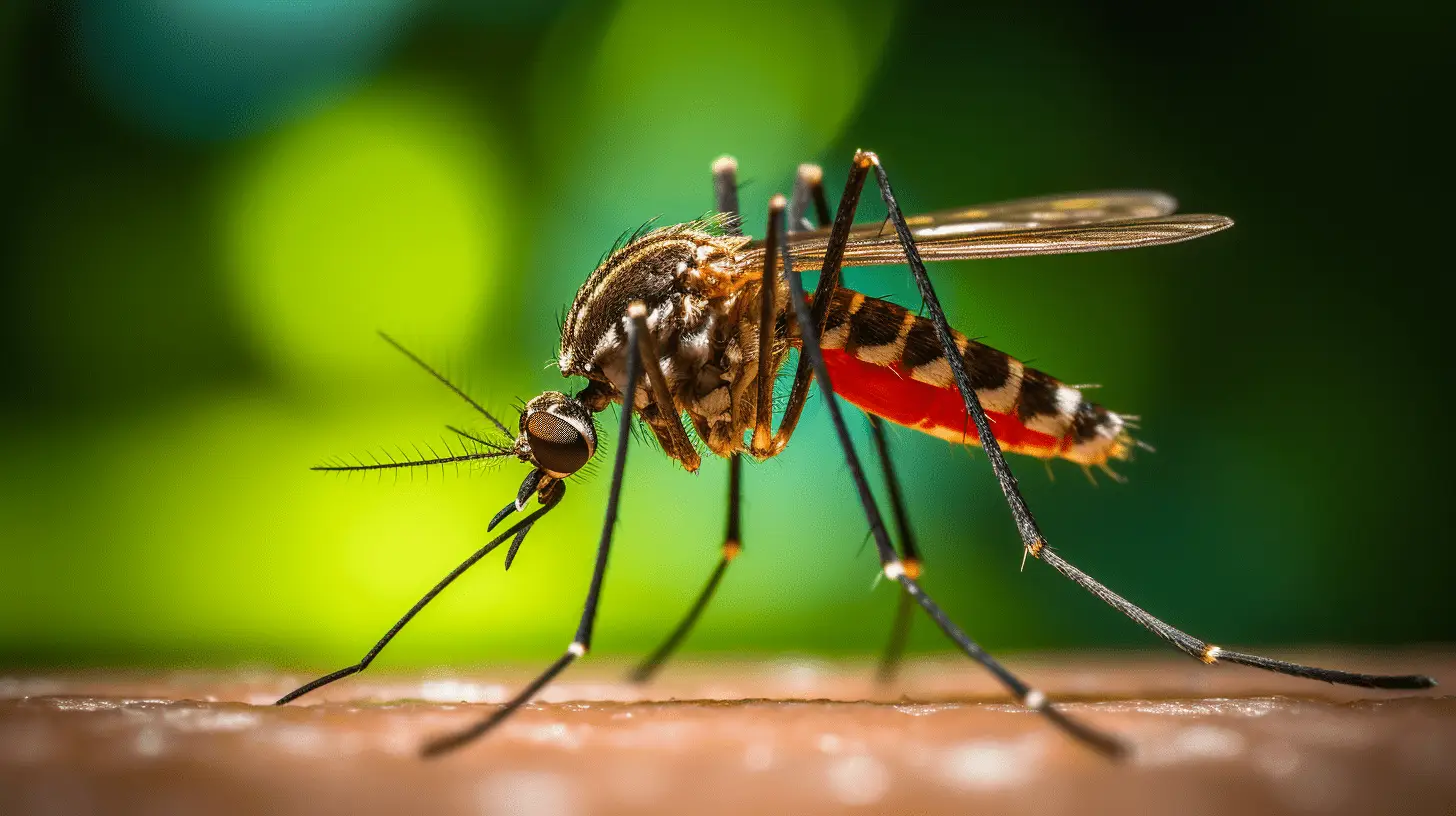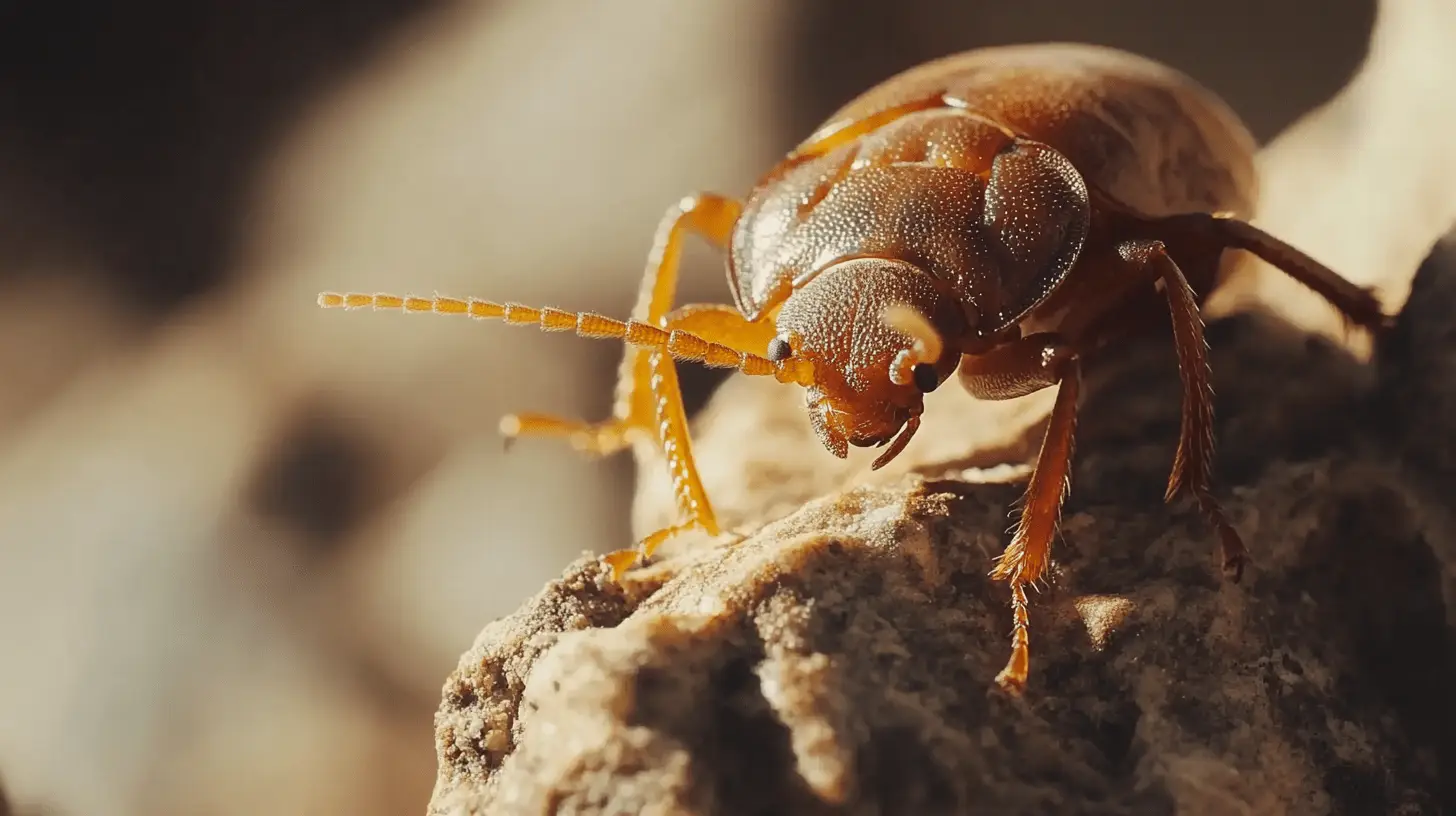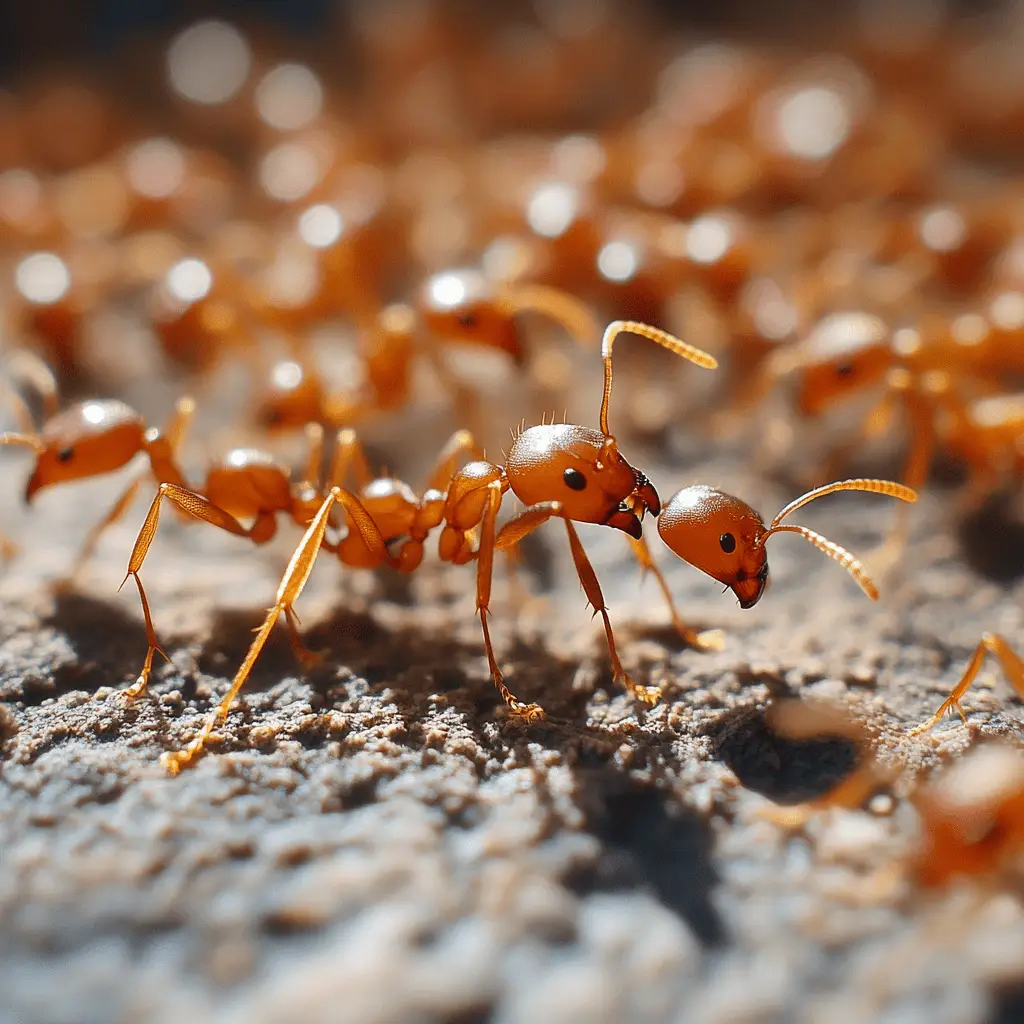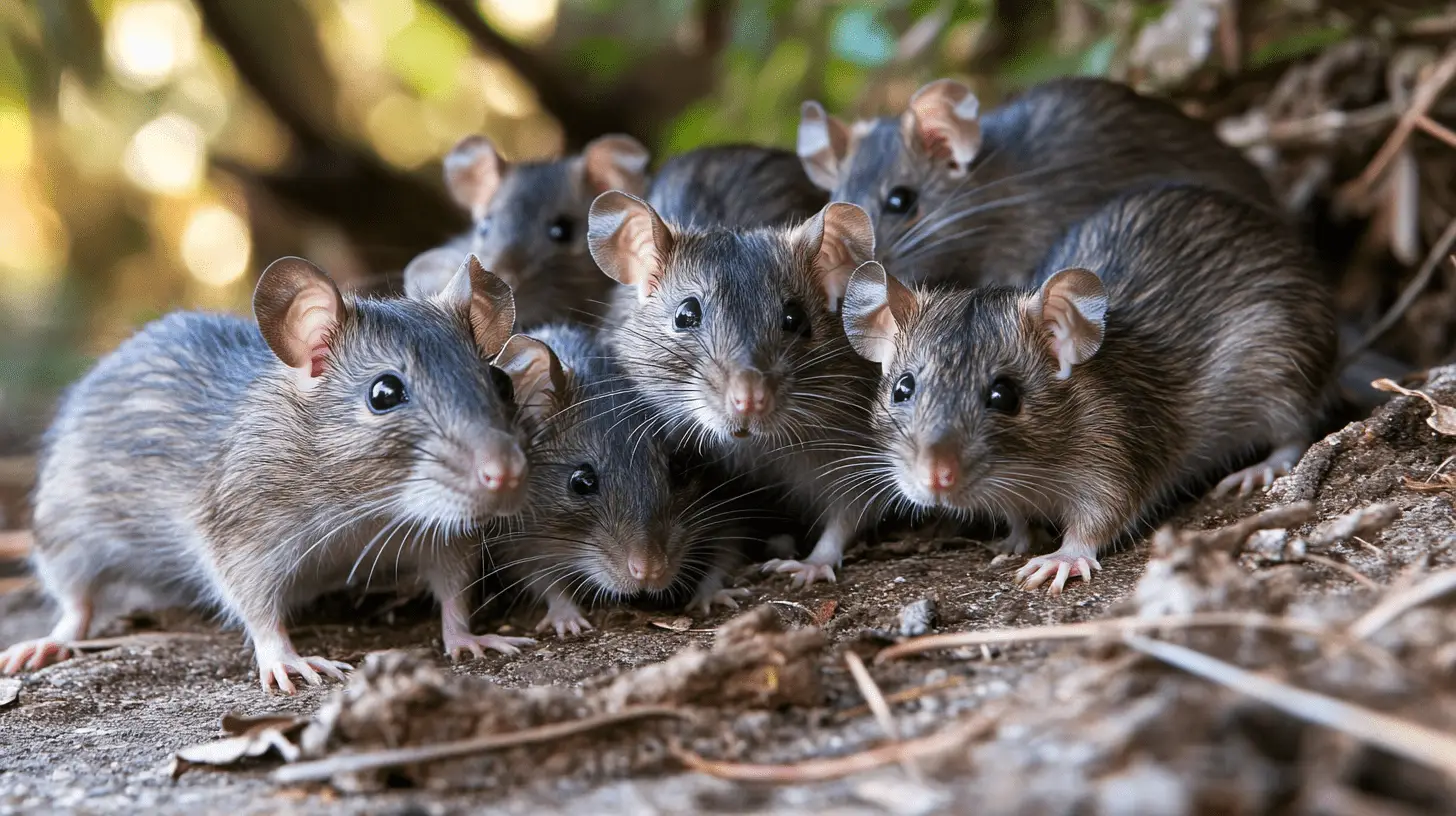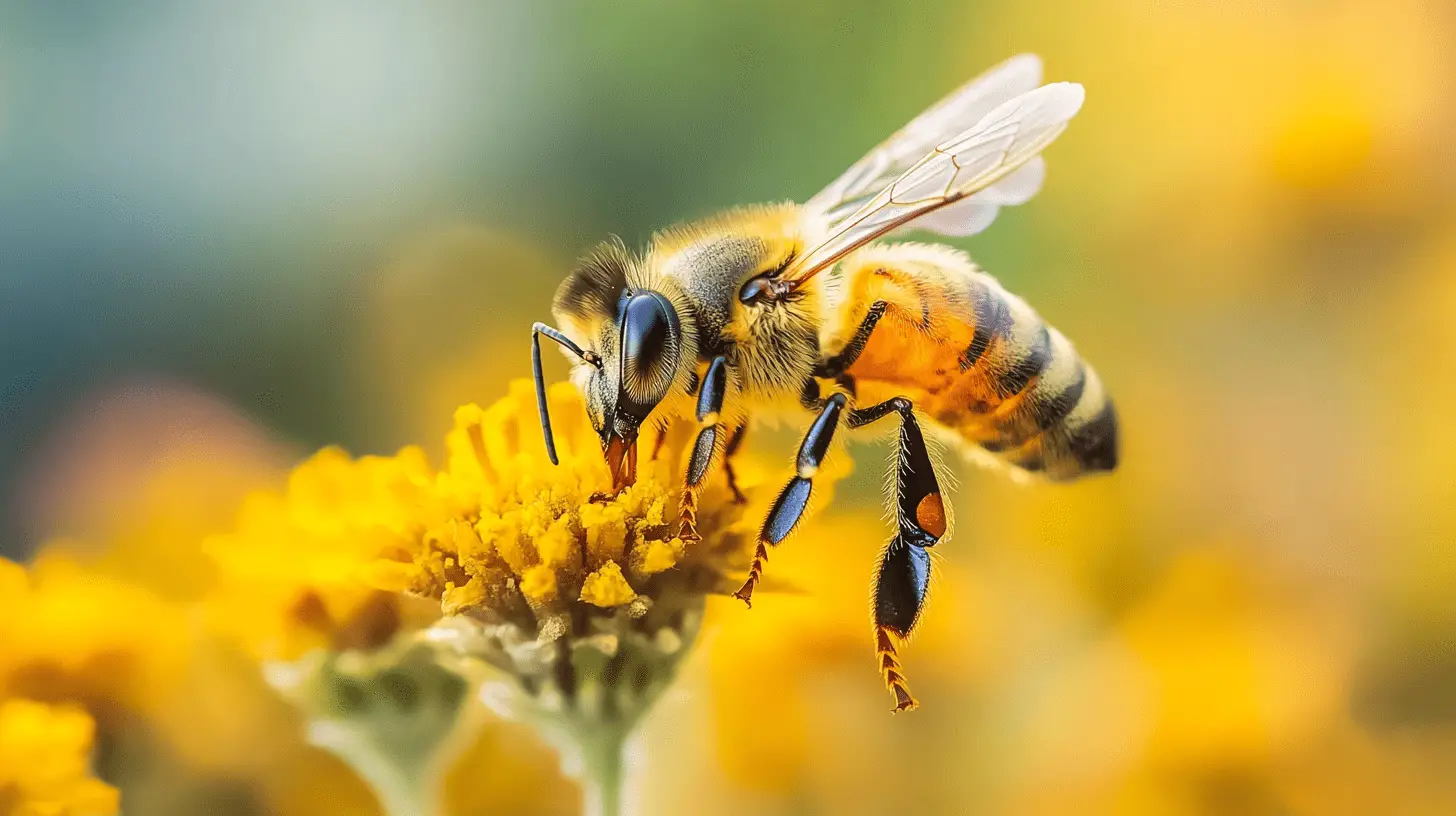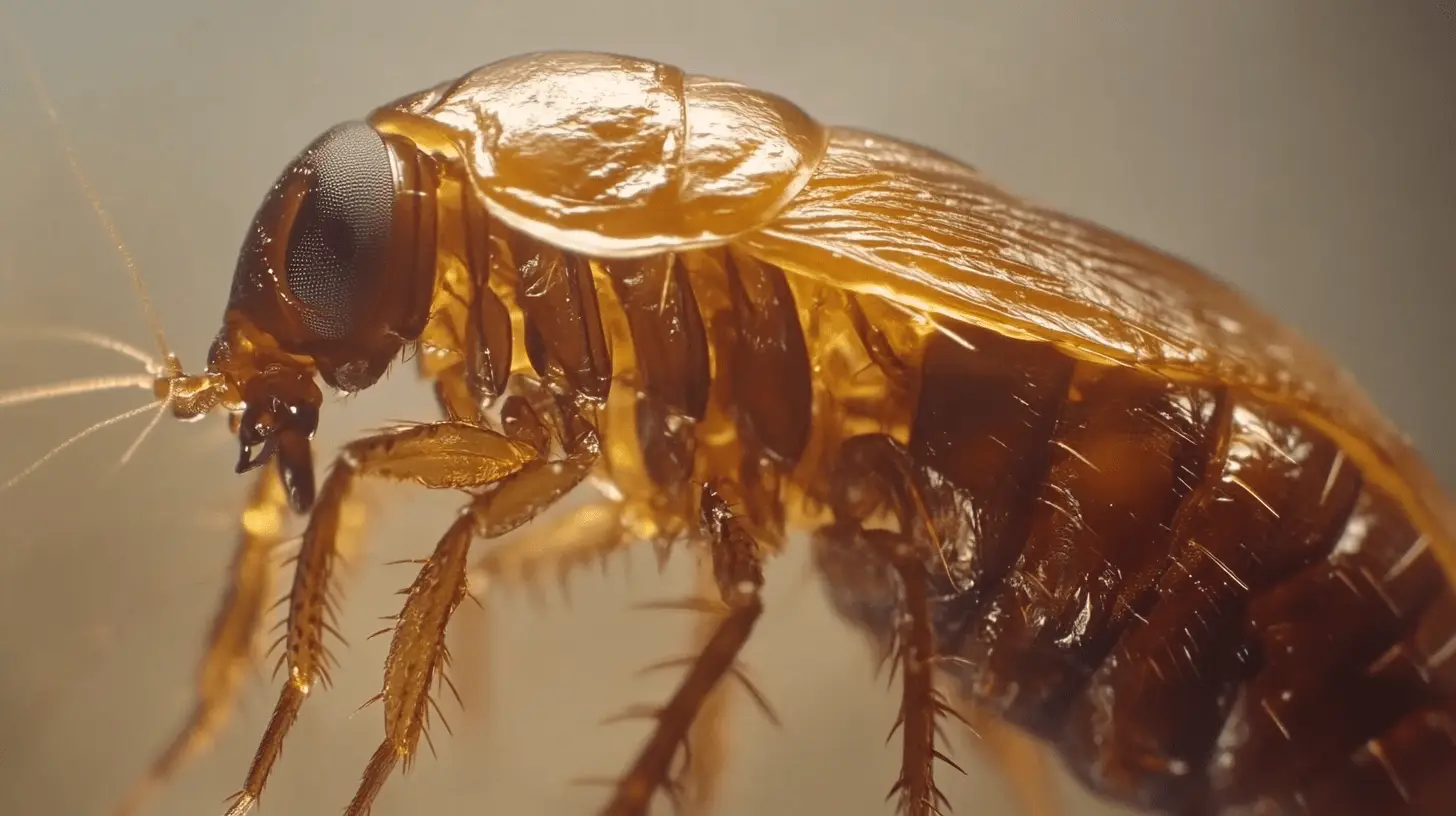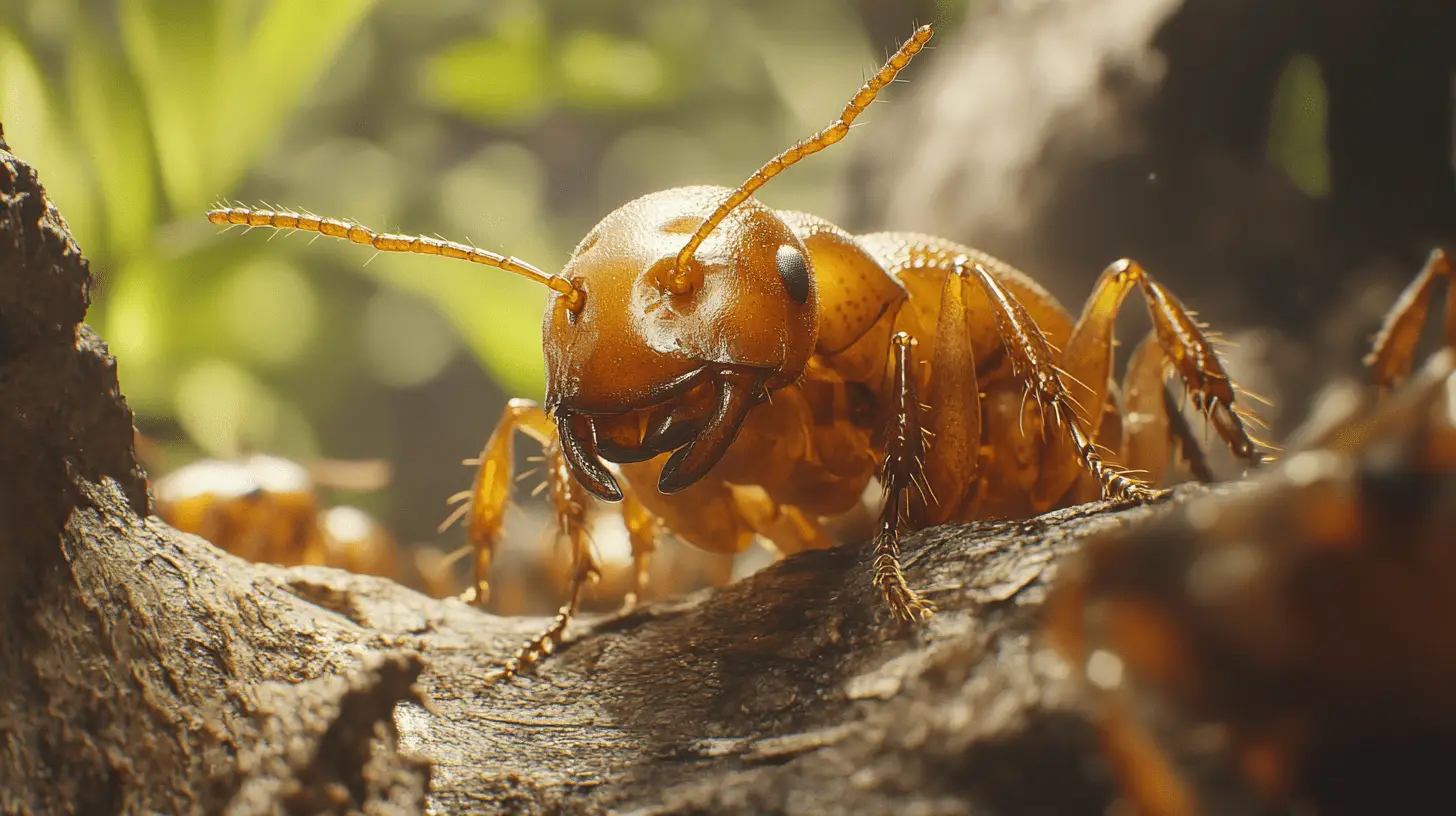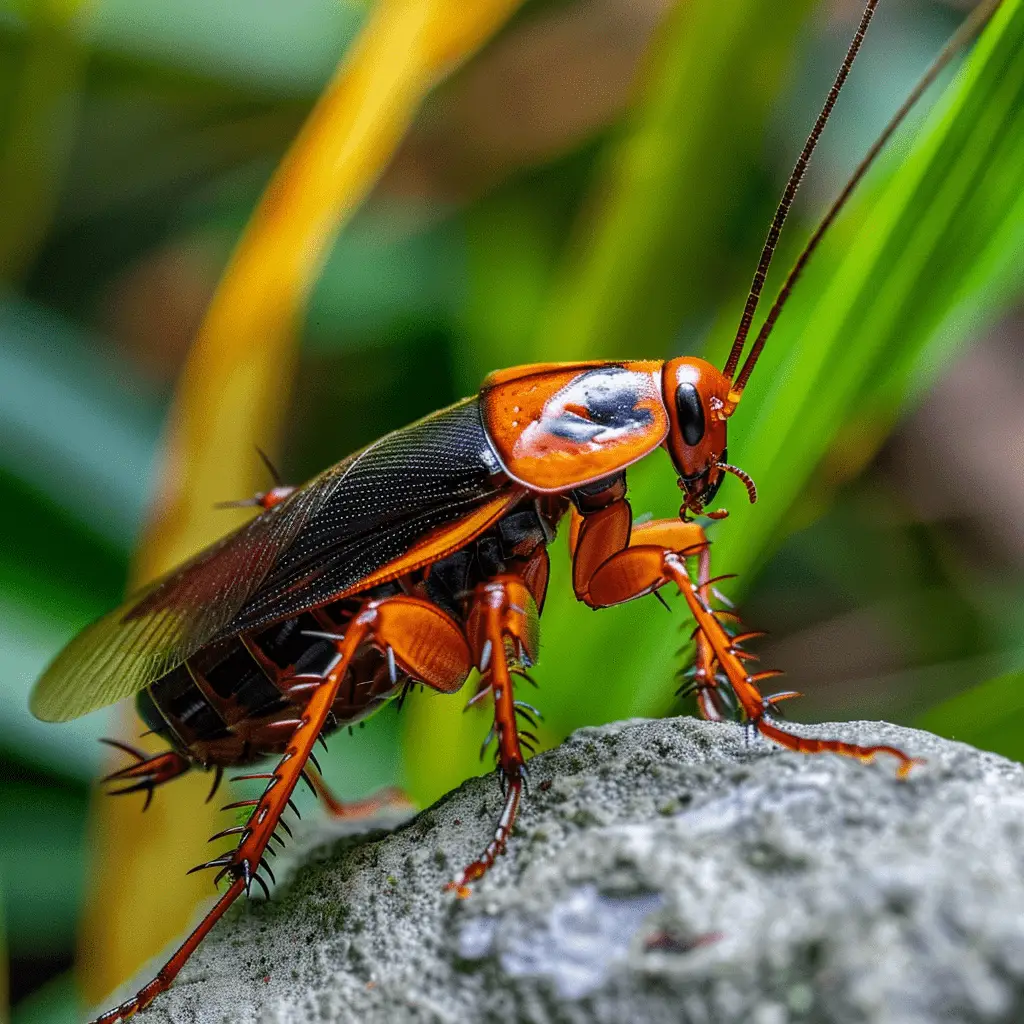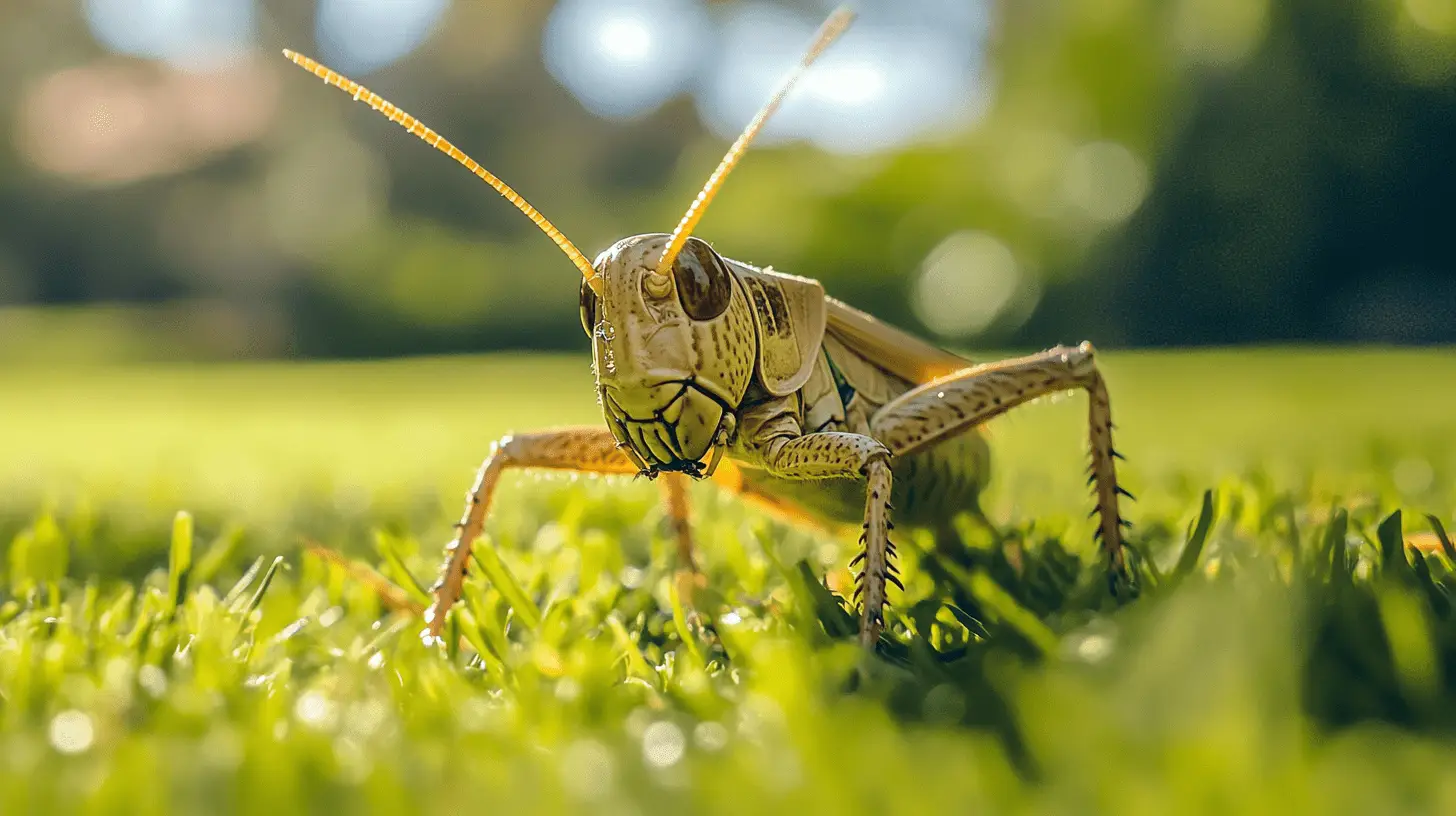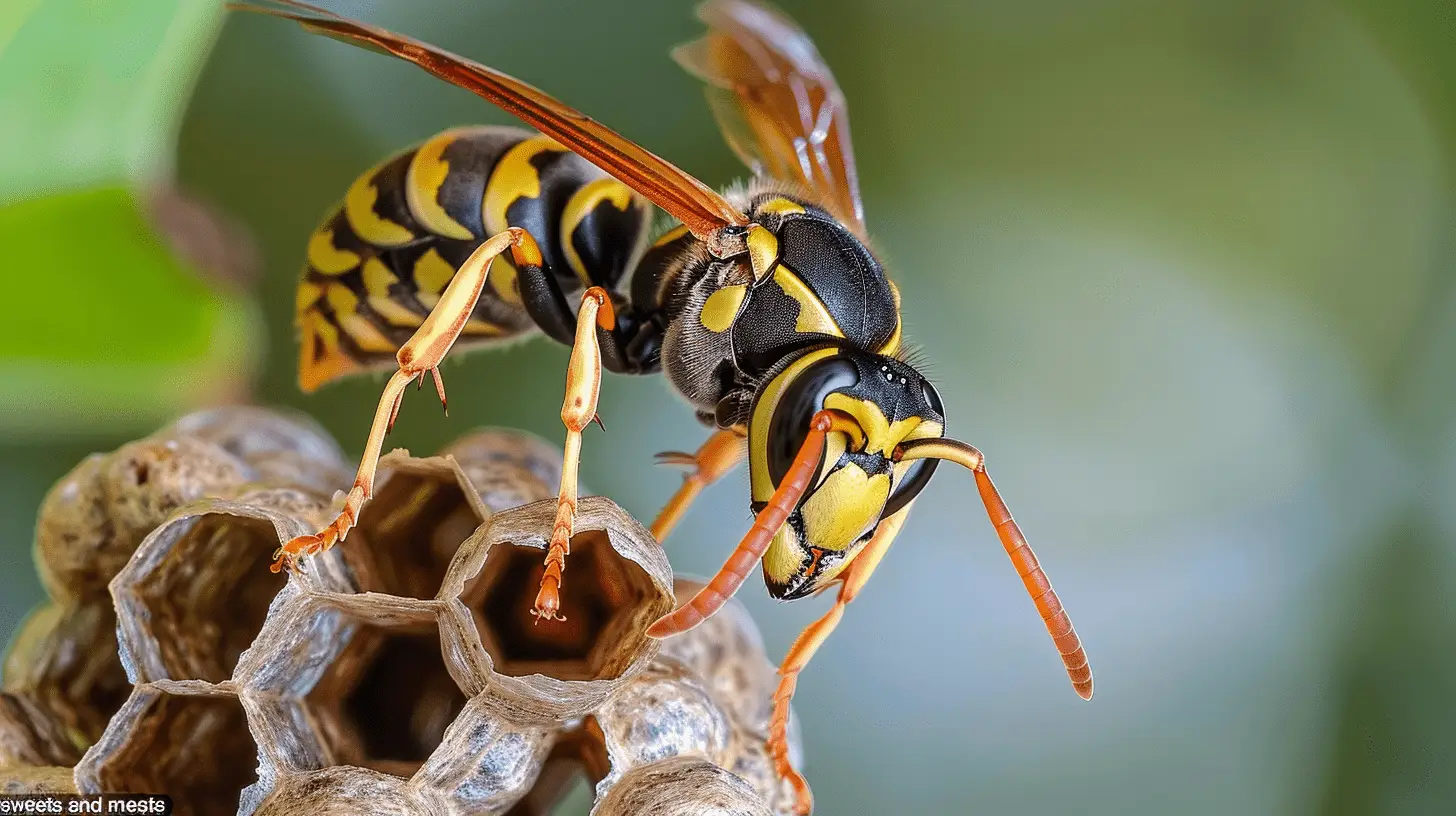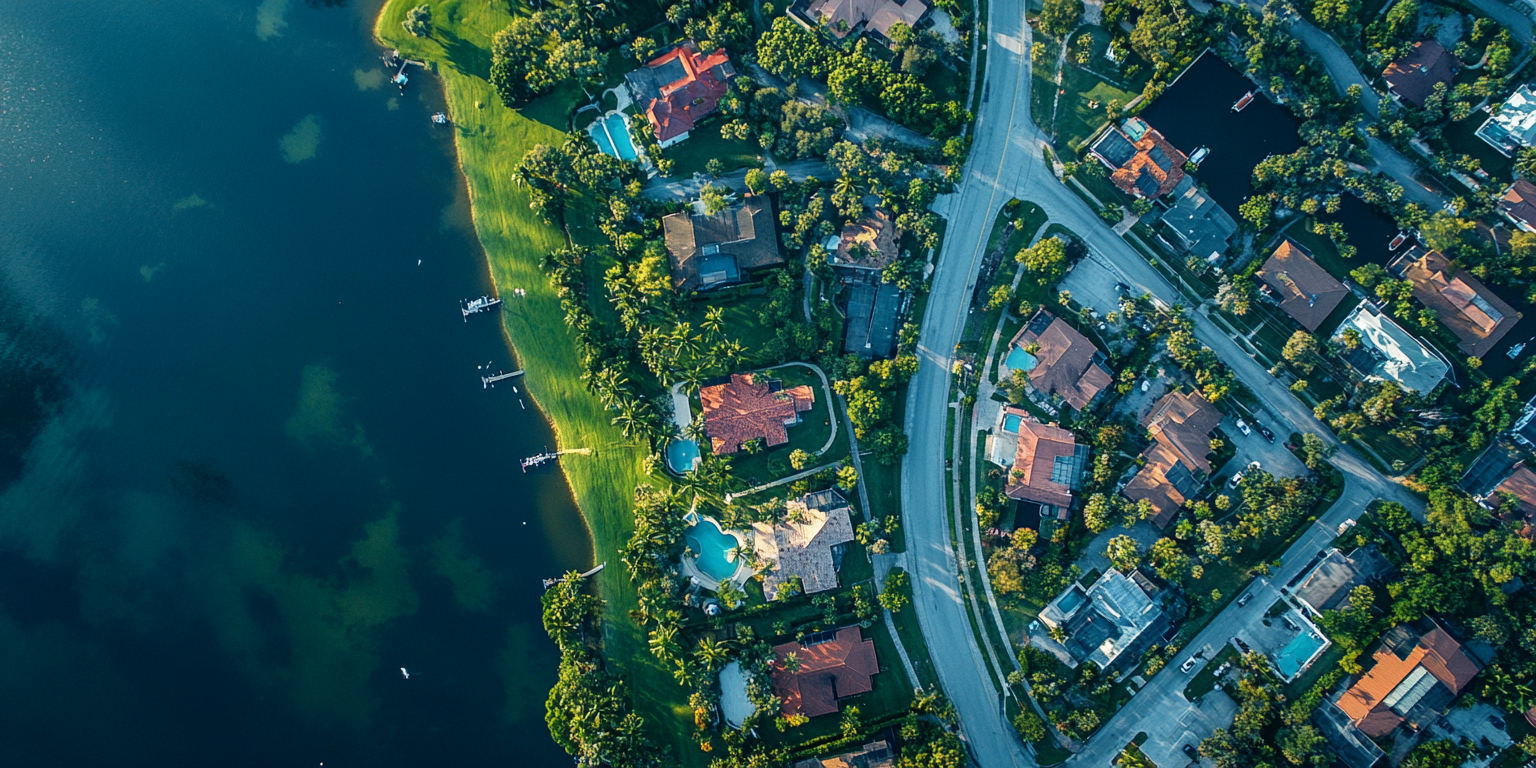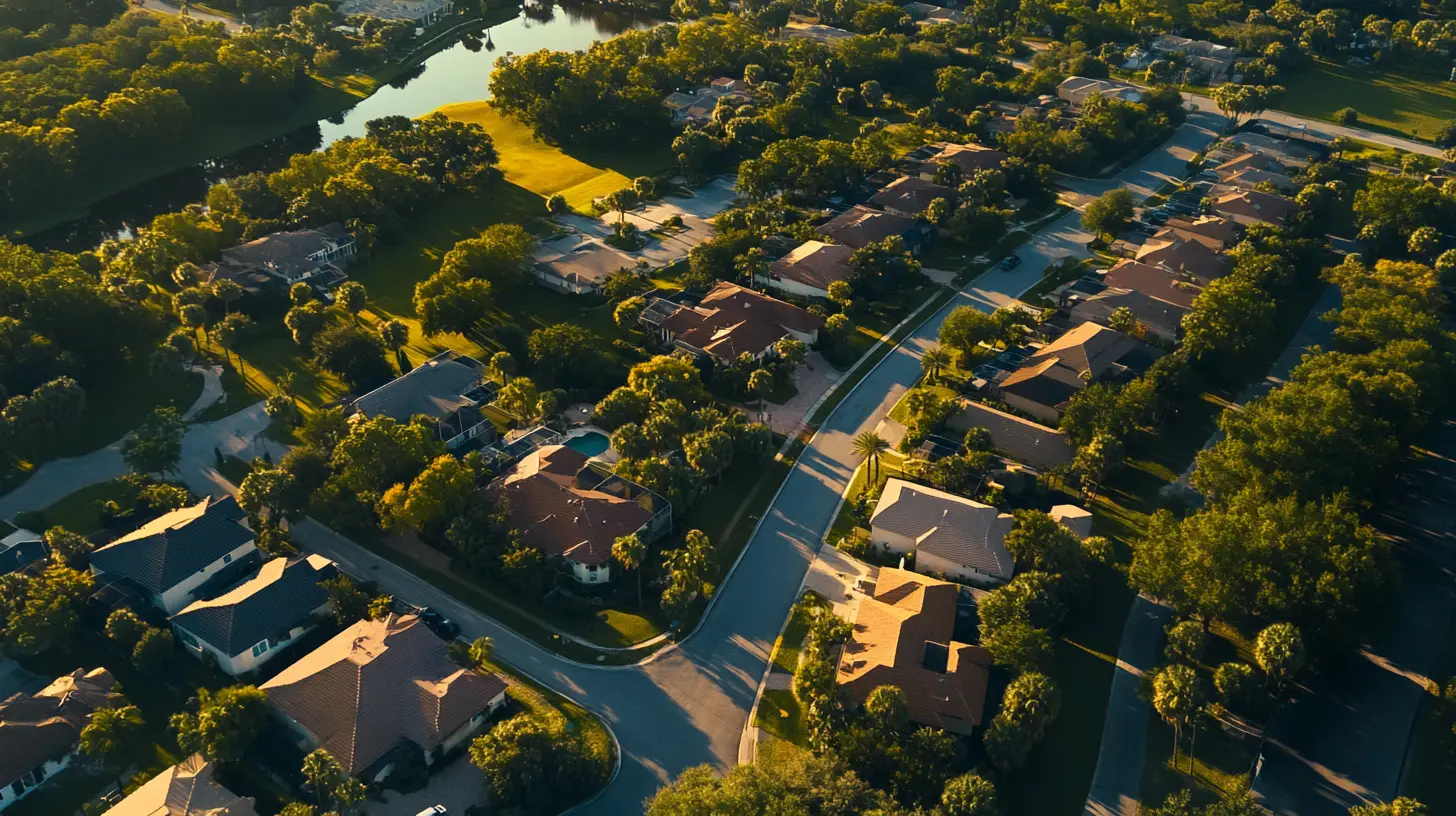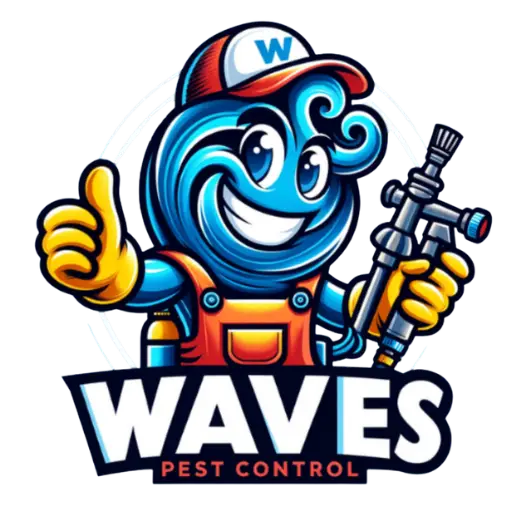At Waves Pest Control, we don’t do “spray and pray.” Our techs show up ready to kick bugs out and keep them out, with pest control that’s built around your home—not some one-size-fits-all checklist from the 1990s. Because no, your living room shouldn’t double as a cockroach freeway.
Florida Weather Brings the Bugs—We Bring the Strategy
Southwest Florida’s warm, muggy weather is basically a party invite for ants, roaches, spiders, mosquitoes, and their freeloading friends. Our team uses seasonal product rotations and targeted treatment plans that shift with the temps, the rain, and the weird bug booms that come out of nowhere. If pests sneak back? So do we—no extra charge.
Same-Day Service. Real People. Zero Nonsense.
Need us fast? We’ve got you. Same-day and next-day visits are part of the deal, and our support doesn’t shut off after 5 p.m. You can message us anytime (we see those late-night “what is THIS thing??” pics) or use the Waves app to check your service history, book your next visit, or ask questions without calling five times.
Because You Deserve a Home That Doesn’t Feel Like a Bug Habitat
Whether it’s ants in the pantry or something that definitely had too many legs in the laundry room, we build a plan that fits your house, your habits, and your neighborhood. No random spraying. No scare tactics. Just smart, local pest control from people who live here, too.
Let’s Kick the Bugs Out for Good
Call (941) 297-5749 to schedule your free inspection and see why Southwest Florida homeowners trust Waves Pest Control to do the job right the first time.
WaveGuard
Bronze
Quarterly Pest Control Service
-
Priority scheduling, unlimited callbacks, 24-hour response
WaveGuard
Silver
WaveGuard Bronze + 1 service
-
Pick from Lawn, Mosquito, Rodent or Termite protection
WaveGuard
Gold
WaveGuard Bronze + 2 services
-
Pick from Lawn, Mosquito, Rodent or Termite protection
WaveGuard
Platinum
WaveGuard Bronze + 3 services
-
Pick from Lawn, Mosquito, Rodent or Termite protection
Trustindex verifies that the original source of the review is Google. Highly recommend Waves pest control!! They are local and amazing. Very good prices and wonderful services. Highly recommend giving them a try!!!
Owner's reply
Thank you, Candace! We’re so happy to help you and Ryan protect your beautiful lanai and keep your waterfront view in Bradenton pest-free. It’s always a pleasure to help maintain such a gorgeous outdoor space!Trustindex verifies that the original source of the review is Google. We moved into a new home in Lakewood Ranch and quickly realized we weren’t the only ones living there—ants, wasps, and even a few rodents had already made themselves comfortable. I called Waves Pest Control after reading a few reviews, and within 24 hours, Adam was at our door. He didn’t just treat the problem—he walked the property with us, answered every question (even the paranoid ones), and laid out a plan that actually made sense. Two visits later, the pests were gone, and we finally felt at home. Friendly, thorough, and genuinely invested—Waves is the real deal.
Owner's reply
Thank you so much for sharing your story! We know how stressful it can be to move into a new home only to discover unexpected (and uninvited) guests. We're thrilled we could respond quickly and that Adam was able to walk you through everything with care and clarity. Helping you feel truly at home—that’s why we do what we do. We’re always just a call away if you need anything in the future. Welcome to Lakewood Ranch, and thank you again for trusting Waves Pest Control! 🌊Trustindex verifies that the original source of the review is Google. I Highly recommend this amazing company! Outstanding & Impeccable service- specifically by Adam- I am thoroughly impressed. He is so professional & attentive. He has a very calming manner about him. He is very honest & he thoroughly investigated the issues & dealt with them accordingly. I can't say enough about this company, I'm so thankful I called them & they responded in a timely manner. Thank you Adam!Trustindex verifies that the original source of the review is Google. Adam and his team are knowledgeable and efficient. I’ve had a great experience and learned a lot about seasonal bugs and what things they are attracted to. Fast results as well!Trustindex verifies that the original source of the review is Google. Adam from Waves Pest Control was very thorough and informative of what was best for our home. I highly recommend him. I called numerous places but Waves was affordable, timely, and just what we needed for pest control.Trustindex verifies that the original source of the review is Google. After all of the rain I had tons of fire ants crawling all over the inside of my townhome and all over my lanai. I called Waves Pest Control the very next morning and Adam generously squeezed me into his busy schedule for that same day which I was very appreciative of. When he arrived it didn’t feel like I was being squeezed into the schedule at all, he didn’t rush through the job and took time to explain everything that he was going to do. Adam was very pleasant and knowledgeable! He even ended up finding brown recluse nests around my front entryway and around the property that I was unaware of which he took care of right away. I was very impressed with the level of care and expertise. I would highly recommend Adam and Waves Pest Control!Trustindex verifies that the original source of the review is Google. Waves Pest Control is very Professional, Reliable and Dependable. I highly recommend them for pest control in Bradenton.Trustindex verifies that the original source of the review is Google. I was impressed with the service from Waves Pest Control and particularly Adam. He homed in on the need and requirements and as a problem-solver came up with an irresistible offer. I was also delighted to experience the way Waves treated me and I assume all customers. Conscientious, attentive, transparent and honesty build trust. Do yourself a favor and call Waves Pest Control Lakewood Ranch you will be thankful you did.Trustindex verifies that the original source of the review is Google. Wave Pest Control is a cut above the rest. We have used Adam at properties in Sarasota and Bradenton. He delivers as promised every time. Great communication and very professional.
Owner's reply
Thanks so much for the kind words Andy! It’s always a pleasure working with you and Brooke, and I’m glad the service and communication have made a difference. We'll keep doing everything we can to deliver with consistency and care.Trustindex verifies that the original source of the review is Google. Impeccable Service, dedication, compassion and care. I cannot recommend this business highly enough. My family (of 7) moved into our new build dream home in December of 2024, since then it seems like every variation of spiders, wasps, mosquitos and bugs have tried to reclaim their old home and move back in! We had pretty scary spiders and Wasps that seemed infatuated with our back porch. No amount of power washing, or home remedies worked. We budgeted and found a company already servicing the neighborhood and thought “why not?!” . Unfortunately it made no difference. I called the company and was told to wait it out.. frankly the company wasn’t too keen on helping after the check cleared. In complete desperation I Called Waves Pest Control and trauma dumped my fears, concerns and ignorance on what to do next. Adam listened, scheduled an appoint for the same week and took his time to explain to my husband and I the concerns he saw, ways to mitigate them on a homeowner level and how he’d like to help. Adam treated our home and it was truly amazing. For the first time since we’ve moved in we’ve been able to enjoy our patio. Haven’t had to inspect our yard before the kids can play and can truly enjoy the home and community. I’ve tried other pest control specialists and I’ve tried the Waves way, save your patio, your babies from bites and your peace of mind and pick Waves.
Owner's reply
Wow Nicole! Thank you so much for sharing your experience in such a powerful way. We’re beyond grateful you gave us the opportunity to turn things around for your family. It means everything to know you're finally able to enjoy your home and backyard the way you should. We’ll be here anytime you need us—thank you again for trusting Waves!
The Waves Pest Control app is your secret weapon against the things crawling, flying, or skittering around your house like they pay rent. From scheduling your pest control visits to checking up on what creepy-crawlies were kicked out last time—we made it simple. Log in, tap a few times, and boom. You’re on top of it. No phone tag. No forgotten appointments. No roaches catching you off guard in the bathroom at 2 a.m.
You’ll know exactly when your next visit is, who’s showing up, and what they’re doing—because it’s all right there in the app. Southwest Florida pests don’t exactly take a vacation (hi, ants in January), so our system keeps everything on a regular schedule without you having to lift more than a thumb.
Trustindex verifies that the original source of the review is Google. Highly recommend Waves pest control!! They are local and amazing. Very good prices and wonderful services. Highly recommend giving them a try!!!
Owner's reply
Thank you, Candace! We’re so happy to help you and Ryan protect your beautiful lanai and keep your waterfront view in Bradenton pest-free. It’s always a pleasure to help maintain such a gorgeous outdoor space!Trustindex verifies that the original source of the review is Google. We moved into a new home in Lakewood Ranch and quickly realized we weren’t the only ones living there—ants, wasps, and even a few rodents had already made themselves comfortable. I called Waves Pest Control after reading a few reviews, and within 24 hours, Adam was at our door. He didn’t just treat the problem—he walked the property with us, answered every question (even the paranoid ones), and laid out a plan that actually made sense. Two visits later, the pests were gone, and we finally felt at home. Friendly, thorough, and genuinely invested—Waves is the real deal.
Owner's reply
Thank you so much for sharing your story! We know how stressful it can be to move into a new home only to discover unexpected (and uninvited) guests. We're thrilled we could respond quickly and that Adam was able to walk you through everything with care and clarity. Helping you feel truly at home—that’s why we do what we do. We’re always just a call away if you need anything in the future. Welcome to Lakewood Ranch, and thank you again for trusting Waves Pest Control! 🌊Trustindex verifies that the original source of the review is Google. I Highly recommend this amazing company! Outstanding & Impeccable service- specifically by Adam- I am thoroughly impressed. He is so professional & attentive. He has a very calming manner about him. He is very honest & he thoroughly investigated the issues & dealt with them accordingly. I can't say enough about this company, I'm so thankful I called them & they responded in a timely manner. Thank you Adam!Trustindex verifies that the original source of the review is Google. Adam and his team are knowledgeable and efficient. I’ve had a great experience and learned a lot about seasonal bugs and what things they are attracted to. Fast results as well!Trustindex verifies that the original source of the review is Google. Adam from Waves Pest Control was very thorough and informative of what was best for our home. I highly recommend him. I called numerous places but Waves was affordable, timely, and just what we needed for pest control.Trustindex verifies that the original source of the review is Google. After all of the rain I had tons of fire ants crawling all over the inside of my townhome and all over my lanai. I called Waves Pest Control the very next morning and Adam generously squeezed me into his busy schedule for that same day which I was very appreciative of. When he arrived it didn’t feel like I was being squeezed into the schedule at all, he didn’t rush through the job and took time to explain everything that he was going to do. Adam was very pleasant and knowledgeable! He even ended up finding brown recluse nests around my front entryway and around the property that I was unaware of which he took care of right away. I was very impressed with the level of care and expertise. I would highly recommend Adam and Waves Pest Control!Trustindex verifies that the original source of the review is Google. Waves Pest Control is very Professional, Reliable and Dependable. I highly recommend them for pest control in Bradenton.Trustindex verifies that the original source of the review is Google. I was impressed with the service from Waves Pest Control and particularly Adam. He homed in on the need and requirements and as a problem-solver came up with an irresistible offer. I was also delighted to experience the way Waves treated me and I assume all customers. Conscientious, attentive, transparent and honesty build trust. Do yourself a favor and call Waves Pest Control Lakewood Ranch you will be thankful you did.Trustindex verifies that the original source of the review is Google. Wave Pest Control is a cut above the rest. We have used Adam at properties in Sarasota and Bradenton. He delivers as promised every time. Great communication and very professional.
Owner's reply
Thanks so much for the kind words Andy! It’s always a pleasure working with you and Brooke, and I’m glad the service and communication have made a difference. We'll keep doing everything we can to deliver with consistency and care.Trustindex verifies that the original source of the review is Google. Impeccable Service, dedication, compassion and care. I cannot recommend this business highly enough. My family (of 7) moved into our new build dream home in December of 2024, since then it seems like every variation of spiders, wasps, mosquitos and bugs have tried to reclaim their old home and move back in! We had pretty scary spiders and Wasps that seemed infatuated with our back porch. No amount of power washing, or home remedies worked. We budgeted and found a company already servicing the neighborhood and thought “why not?!” . Unfortunately it made no difference. I called the company and was told to wait it out.. frankly the company wasn’t too keen on helping after the check cleared. In complete desperation I Called Waves Pest Control and trauma dumped my fears, concerns and ignorance on what to do next. Adam listened, scheduled an appoint for the same week and took his time to explain to my husband and I the concerns he saw, ways to mitigate them on a homeowner level and how he’d like to help. Adam treated our home and it was truly amazing. For the first time since we’ve moved in we’ve been able to enjoy our patio. Haven’t had to inspect our yard before the kids can play and can truly enjoy the home and community. I’ve tried other pest control specialists and I’ve tried the Waves way, save your patio, your babies from bites and your peace of mind and pick Waves.
Owner's reply
Wow Nicole! Thank you so much for sharing your experience in such a powerful way. We’re beyond grateful you gave us the opportunity to turn things around for your family. It means everything to know you're finally able to enjoy your home and backyard the way you should. We’ll be here anytime you need us—thank you again for trusting Waves!
Trustindex verifies that the original source of the review is Google. Highly recommend Waves pest control!! They are local and amazing. Very good prices and wonderful services. Highly recommend giving them a try!!!
Owner's reply
Thank you, Candace! We’re so happy to help you and Ryan protect your beautiful lanai and keep your waterfront view in Bradenton pest-free. It’s always a pleasure to help maintain such a gorgeous outdoor space!Trustindex verifies that the original source of the review is Google. We moved into a new home in Lakewood Ranch and quickly realized we weren’t the only ones living there—ants, wasps, and even a few rodents had already made themselves comfortable. I called Waves Pest Control after reading a few reviews, and within 24 hours, Adam was at our door. He didn’t just treat the problem—he walked the property with us, answered every question (even the paranoid ones), and laid out a plan that actually made sense. Two visits later, the pests were gone, and we finally felt at home. Friendly, thorough, and genuinely invested—Waves is the real deal.
Owner's reply
Thank you so much for sharing your story! We know how stressful it can be to move into a new home only to discover unexpected (and uninvited) guests. We're thrilled we could respond quickly and that Adam was able to walk you through everything with care and clarity. Helping you feel truly at home—that’s why we do what we do. We’re always just a call away if you need anything in the future. Welcome to Lakewood Ranch, and thank you again for trusting Waves Pest Control! 🌊Trustindex verifies that the original source of the review is Google. I Highly recommend this amazing company! Outstanding & Impeccable service- specifically by Adam- I am thoroughly impressed. He is so professional & attentive. He has a very calming manner about him. He is very honest & he thoroughly investigated the issues & dealt with them accordingly. I can't say enough about this company, I'm so thankful I called them & they responded in a timely manner. Thank you Adam!Trustindex verifies that the original source of the review is Google. Adam and his team are knowledgeable and efficient. I’ve had a great experience and learned a lot about seasonal bugs and what things they are attracted to. Fast results as well!Trustindex verifies that the original source of the review is Google. Adam from Waves Pest Control was very thorough and informative of what was best for our home. I highly recommend him. I called numerous places but Waves was affordable, timely, and just what we needed for pest control.Trustindex verifies that the original source of the review is Google. After all of the rain I had tons of fire ants crawling all over the inside of my townhome and all over my lanai. I called Waves Pest Control the very next morning and Adam generously squeezed me into his busy schedule for that same day which I was very appreciative of. When he arrived it didn’t feel like I was being squeezed into the schedule at all, he didn’t rush through the job and took time to explain everything that he was going to do. Adam was very pleasant and knowledgeable! He even ended up finding brown recluse nests around my front entryway and around the property that I was unaware of which he took care of right away. I was very impressed with the level of care and expertise. I would highly recommend Adam and Waves Pest Control!Trustindex verifies that the original source of the review is Google. Waves Pest Control is very Professional, Reliable and Dependable. I highly recommend them for pest control in Bradenton.Trustindex verifies that the original source of the review is Google. I was impressed with the service from Waves Pest Control and particularly Adam. He homed in on the need and requirements and as a problem-solver came up with an irresistible offer. I was also delighted to experience the way Waves treated me and I assume all customers. Conscientious, attentive, transparent and honesty build trust. Do yourself a favor and call Waves Pest Control Lakewood Ranch you will be thankful you did.Trustindex verifies that the original source of the review is Google. Wave Pest Control is a cut above the rest. We have used Adam at properties in Sarasota and Bradenton. He delivers as promised every time. Great communication and very professional.
Owner's reply
Thanks so much for the kind words Andy! It’s always a pleasure working with you and Brooke, and I’m glad the service and communication have made a difference. We'll keep doing everything we can to deliver with consistency and care.Trustindex verifies that the original source of the review is Google. Impeccable Service, dedication, compassion and care. I cannot recommend this business highly enough. My family (of 7) moved into our new build dream home in December of 2024, since then it seems like every variation of spiders, wasps, mosquitos and bugs have tried to reclaim their old home and move back in! We had pretty scary spiders and Wasps that seemed infatuated with our back porch. No amount of power washing, or home remedies worked. We budgeted and found a company already servicing the neighborhood and thought “why not?!” . Unfortunately it made no difference. I called the company and was told to wait it out.. frankly the company wasn’t too keen on helping after the check cleared. In complete desperation I Called Waves Pest Control and trauma dumped my fears, concerns and ignorance on what to do next. Adam listened, scheduled an appoint for the same week and took his time to explain to my husband and I the concerns he saw, ways to mitigate them on a homeowner level and how he’d like to help. Adam treated our home and it was truly amazing. For the first time since we’ve moved in we’ve been able to enjoy our patio. Haven’t had to inspect our yard before the kids can play and can truly enjoy the home and community. I’ve tried other pest control specialists and I’ve tried the Waves way, save your patio, your babies from bites and your peace of mind and pick Waves.
Owner's reply
Wow Nicole! Thank you so much for sharing your experience in such a powerful way. We’re beyond grateful you gave us the opportunity to turn things around for your family. It means everything to know you're finally able to enjoy your home and backyard the way you should. We’ll be here anytime you need us—thank you again for trusting Waves!
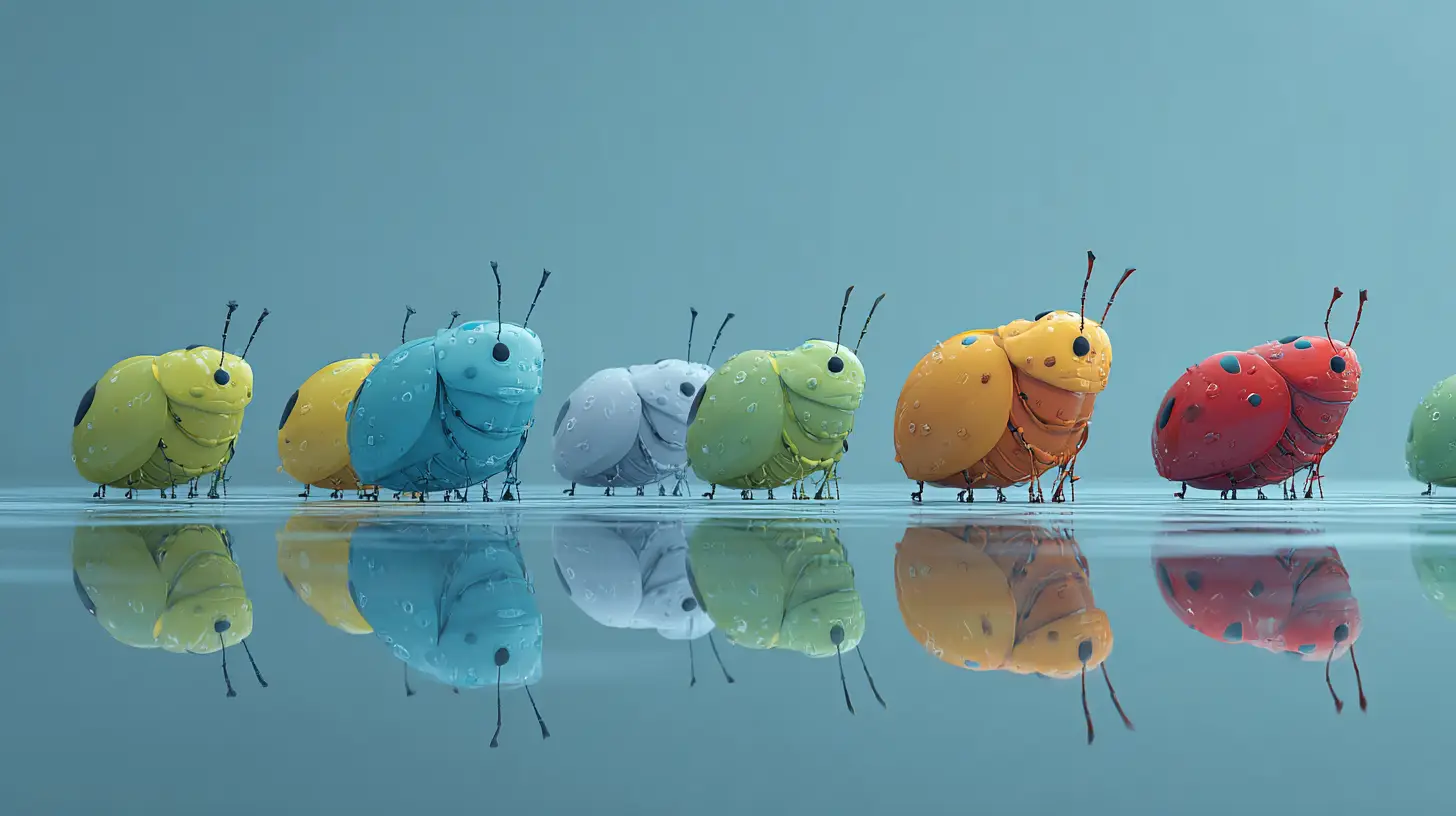
4 Pest Repellent Colors for Your Bradenton Home
If you’ve lived in Bradenton for any length of time, you know that our beautiful
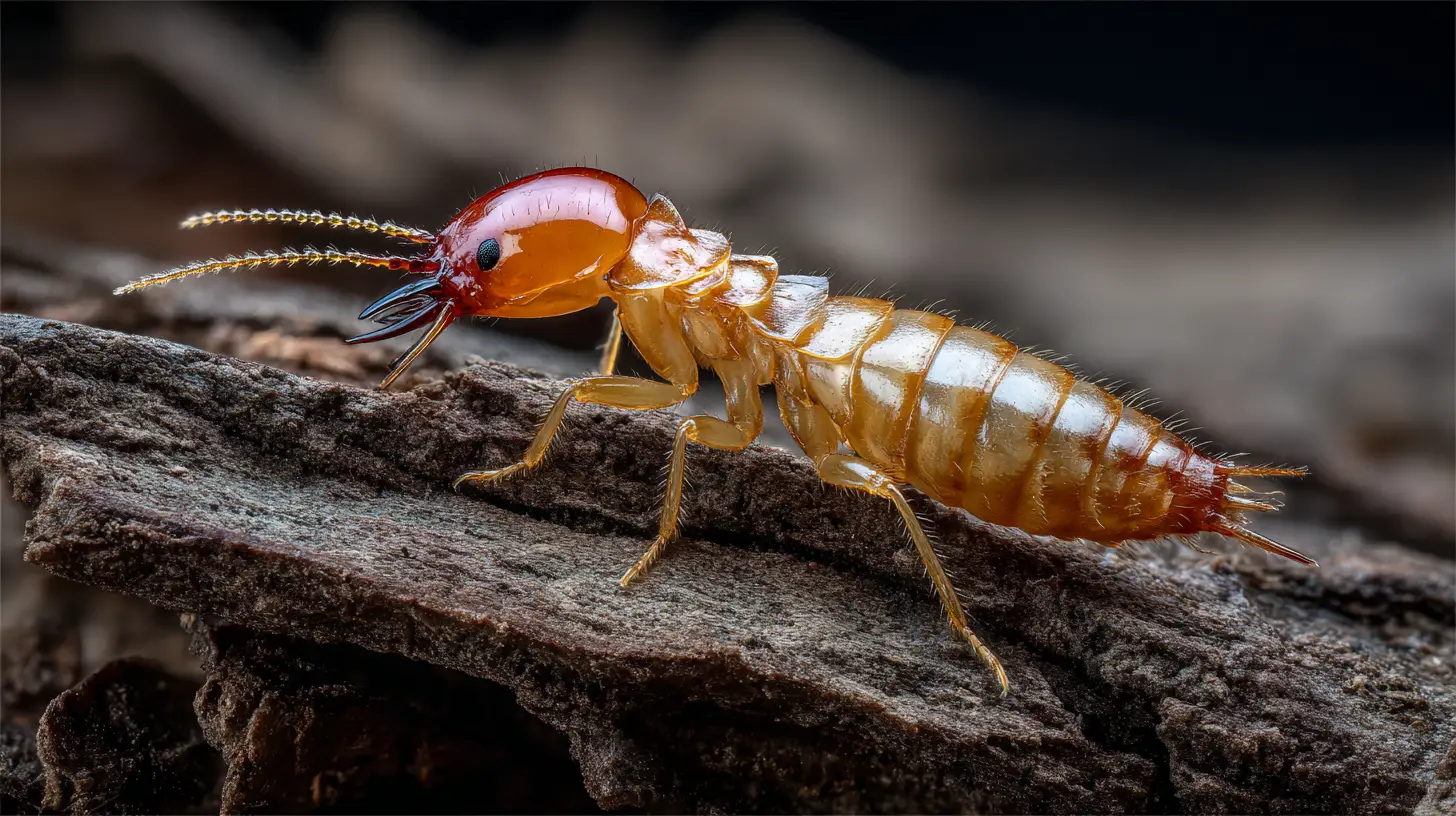
Drywood Termites in Bradenton: The Silent Destroyers That Don’t Need Soil to Ruin Your Home
When most Bradenton homeowners think about termites, they picture the subterranean species that build mud
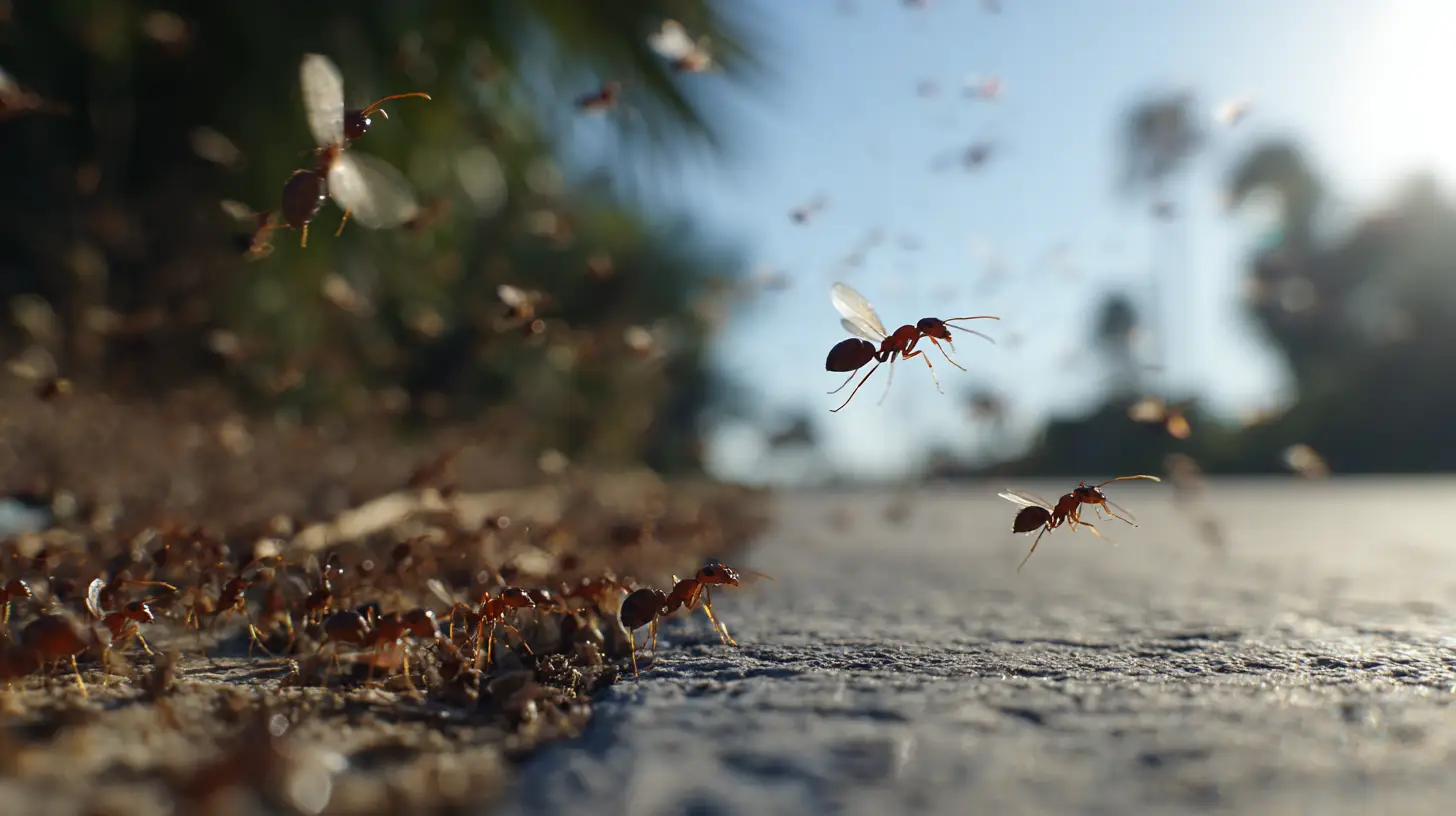
Flying Ants in Bradenton FL: Why Your Home Gets Invaded by Winged Insects Every Summer
If you’ve lived in Bradenton for more than a year, you’ve probably experienced the annual
Trustindex verifies that the original source of the review is Google. Highly recommend Waves pest control!! They are local and amazing. Very good prices and wonderful services. Highly recommend giving them a try!!!
Owner's reply
Thank you, Candace! We’re so happy to help you and Ryan protect your beautiful lanai and keep your waterfront view in Bradenton pest-free. It’s always a pleasure to help maintain such a gorgeous outdoor space!Trustindex verifies that the original source of the review is Google. We moved into a new home in Lakewood Ranch and quickly realized we weren’t the only ones living there—ants, wasps, and even a few rodents had already made themselves comfortable. I called Waves Pest Control after reading a few reviews, and within 24 hours, Adam was at our door. He didn’t just treat the problem—he walked the property with us, answered every question (even the paranoid ones), and laid out a plan that actually made sense. Two visits later, the pests were gone, and we finally felt at home. Friendly, thorough, and genuinely invested—Waves is the real deal.
Owner's reply
Thank you so much for sharing your story! We know how stressful it can be to move into a new home only to discover unexpected (and uninvited) guests. We're thrilled we could respond quickly and that Adam was able to walk you through everything with care and clarity. Helping you feel truly at home—that’s why we do what we do. We’re always just a call away if you need anything in the future. Welcome to Lakewood Ranch, and thank you again for trusting Waves Pest Control! 🌊Trustindex verifies that the original source of the review is Google. I Highly recommend this amazing company! Outstanding & Impeccable service- specifically by Adam- I am thoroughly impressed. He is so professional & attentive. He has a very calming manner about him. He is very honest & he thoroughly investigated the issues & dealt with them accordingly. I can't say enough about this company, I'm so thankful I called them & they responded in a timely manner. Thank you Adam!Trustindex verifies that the original source of the review is Google. Adam and his team are knowledgeable and efficient. I’ve had a great experience and learned a lot about seasonal bugs and what things they are attracted to. Fast results as well!Trustindex verifies that the original source of the review is Google. Adam from Waves Pest Control was very thorough and informative of what was best for our home. I highly recommend him. I called numerous places but Waves was affordable, timely, and just what we needed for pest control.Trustindex verifies that the original source of the review is Google. After all of the rain I had tons of fire ants crawling all over the inside of my townhome and all over my lanai. I called Waves Pest Control the very next morning and Adam generously squeezed me into his busy schedule for that same day which I was very appreciative of. When he arrived it didn’t feel like I was being squeezed into the schedule at all, he didn’t rush through the job and took time to explain everything that he was going to do. Adam was very pleasant and knowledgeable! He even ended up finding brown recluse nests around my front entryway and around the property that I was unaware of which he took care of right away. I was very impressed with the level of care and expertise. I would highly recommend Adam and Waves Pest Control!Trustindex verifies that the original source of the review is Google. Waves Pest Control is very Professional, Reliable and Dependable. I highly recommend them for pest control in Bradenton.Trustindex verifies that the original source of the review is Google. I was impressed with the service from Waves Pest Control and particularly Adam. He homed in on the need and requirements and as a problem-solver came up with an irresistible offer. I was also delighted to experience the way Waves treated me and I assume all customers. Conscientious, attentive, transparent and honesty build trust. Do yourself a favor and call Waves Pest Control Lakewood Ranch you will be thankful you did.Trustindex verifies that the original source of the review is Google. Wave Pest Control is a cut above the rest. We have used Adam at properties in Sarasota and Bradenton. He delivers as promised every time. Great communication and very professional.
Owner's reply
Thanks so much for the kind words Andy! It’s always a pleasure working with you and Brooke, and I’m glad the service and communication have made a difference. We'll keep doing everything we can to deliver with consistency and care.Trustindex verifies that the original source of the review is Google. Impeccable Service, dedication, compassion and care. I cannot recommend this business highly enough. My family (of 7) moved into our new build dream home in December of 2024, since then it seems like every variation of spiders, wasps, mosquitos and bugs have tried to reclaim their old home and move back in! We had pretty scary spiders and Wasps that seemed infatuated with our back porch. No amount of power washing, or home remedies worked. We budgeted and found a company already servicing the neighborhood and thought “why not?!” . Unfortunately it made no difference. I called the company and was told to wait it out.. frankly the company wasn’t too keen on helping after the check cleared. In complete desperation I Called Waves Pest Control and trauma dumped my fears, concerns and ignorance on what to do next. Adam listened, scheduled an appoint for the same week and took his time to explain to my husband and I the concerns he saw, ways to mitigate them on a homeowner level and how he’d like to help. Adam treated our home and it was truly amazing. For the first time since we’ve moved in we’ve been able to enjoy our patio. Haven’t had to inspect our yard before the kids can play and can truly enjoy the home and community. I’ve tried other pest control specialists and I’ve tried the Waves way, save your patio, your babies from bites and your peace of mind and pick Waves.
Owner's reply
Wow Nicole! Thank you so much for sharing your experience in such a powerful way. We’re beyond grateful you gave us the opportunity to turn things around for your family. It means everything to know you're finally able to enjoy your home and backyard the way you should. We’ll be here anytime you need us—thank you again for trusting Waves!
I don't currently have pests, is pest control still needed?
An initial pest control treatment is crucial for eliminating and preventing infestations, but pest management is essential year-round in our subtropical climate. We use premium pest control products to ensure every treatment strengthens the protective barrier around your home, keeping pests away.
What are ongoing treatments neccesary?
Pest control in subtropical climates demands regular attention. While the initial treatment is vital for eradicating pests, year-round protection is crucial. Our quarterly pest control services utilize premium products that strengthen your home’s defense against infestations.
I just moved into a new home, is pest control a good idea?
Even in newly constructed homes, your property remains vulnerable to pests for weeks or even months. Once windows, doors, and the roof are installed, pests can easily slip in as unwanted guests. As the structure settles over time, even more pests may attempt to find their way indoors.
Do you have a pest control guarantee?
We offer a comprehensive pest control guarantee that includes unlimited callbacks if pests return, a 100% satisfaction promise with extra treatments as needed, and a rapid response time within 2 hours, ensuring on-site service within 24 hours.
Are you licensed and insured?
Yes, all our technicians are highly trained, experienced, state-licensed, and fully insured, ensuring your peace of mind with every service.
How much does expert pest control cost?
Waves Pest Control offers affordable pest management solutions starting at just $39/month for quarterly services. Our cost-effective services include three visits annually, providing year-round protection for residents. If you’re searching for “affordable pest control near me” in Southwest Florida, our competitive pricing and thorough coverage make us a top choice for local homeowners.
How can I find pest control near me?
For “pest control near me,” count on us for expert, personalized services. Our highly trained professionals address local pest problems with tailored pest control solutions and preventative strategies, ensuring your property remains pest-free year-round.

